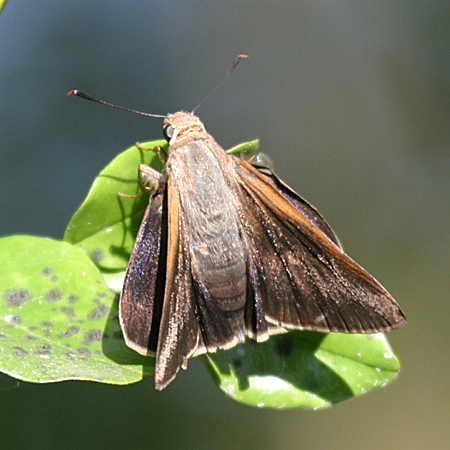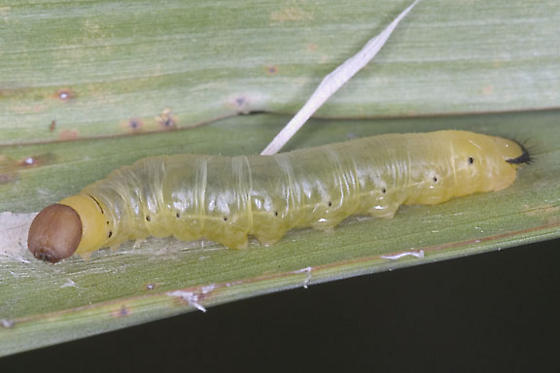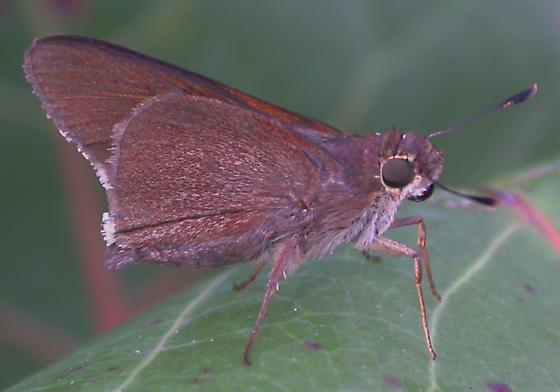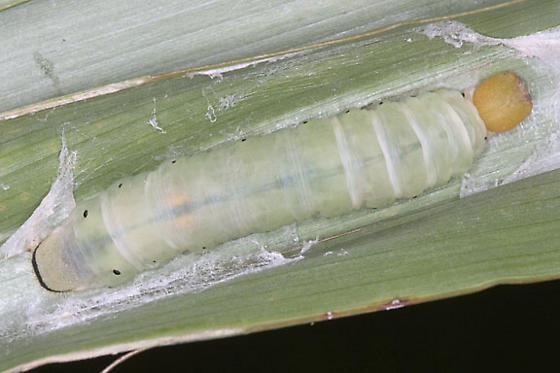Monk Skipper
|
adult, top view; Photo © Tom Murray, www.pbase.com/tmurray74 |
|
adult, lateral view; Photo © Alan Chin-Lee, www.alanchinlee.com |
|
pre-molt 4th instar larva; Photo © Alan Chin-Lee, www.alanchinlee.com |
|
adult; Photo © Jeff Hollenbeck |
|
final instar larva; Photo © Alan Chin-Lee, www.alanchinlee.com |
Scientific name
Asbolis capucinus (Lucas)
Family
Hesperiidae
Description
Adults: Wingspan 3.8-6.4 cm; forewing and hindwing dark brown with essentially no distinct markings, however, female may have 2 pale elyptical spots on forewing; antennae clubbed, male with a black stigmastigma:
an area of dark-colored scent scales located near the center of the forewing of some male Lepidoptera; useful in producting pheromones to attract females
.
Larvae: Length greater than 2.5 cm; body smooth and greenish in color; body markings with small black dots; head larger than prothorax.
Diagnostic features
Adult: Forewings dark brown with rufous edge at base with essentially no markings; male has a black stigmastigma:
an area of dark-colored scent scales located near the center of the forewing of some male Lepidoptera; useful in producting pheromones to attract females
.
Larvae: Head larger than prothorax.
Distribution
Native: Cuba
Introduced: United States (Florida). Species now ranges from Central to South Florida.
Hosts
Palms: many genera
Other: none
May be confused with
Ventral, solid dark color flecked with light scales, and light colored wing fringes, along with its large size differentiate it from the Palatka Skipper.
Additional comments
Caterpillars feed on mature leaves and fold fronds to make a nest. South Florida and Florida Keys have numerous generations per year. Central Florida has 3-4 generations per year.







